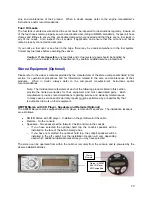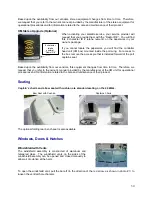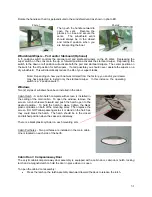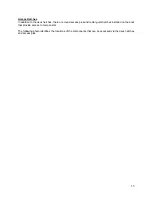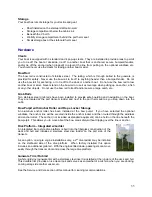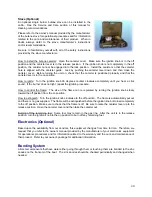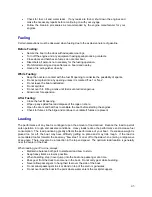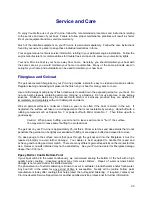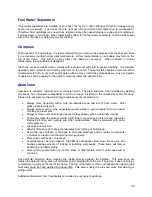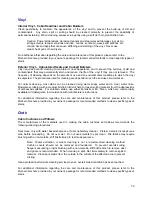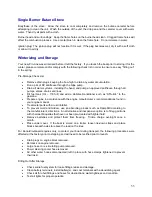
43
Check for fuel, oil and water leaks. If any leaks are found, shut down the engines and
make the necessary repairs before continuing on with your voyage.
Follow the break-in procedures as recommended by the engine manufacturer for your
engines.
Fueling
Certain precautions must be observed when fueling due to the explosive nature of gasoline.
Before Fueling:
Secure the boat to the dock with adequate moorings.
Turn off the engine and any equipment having spark-producing contacts.
Close doors and hatches so fumes do not enter boat.
Disembark all persons not necessary for the fueling operation.
Prohibit all smoking and open flames on board and nearby.
Have a fire extinguisher close by.
While Fueling:
Keep the nozzle in contact with the fuel fill opening to minimize the possibility of sparks.
Do not pump fuel into any opening unless it is marked “Fuel” or “Gas”.
Do not leave the boat unattended.
Do not spill fuel.
Do not over fill. Filling a tank until fuel is vented is dangerous.
Allow room for expansion.
After Fueling:
Close the fuel fill opening.
Wipe up any spilled fuel and dispose of the rags on shore.
Open the doors and hatches to ventilate the boat before starting the engines.
Check for fumes in the bilge and continue to ventilate if fumes are present.
Loading
The performance of any boat is contingent upon the amount of load carried. Reduce the load to permit
safe operation in rough and adverse conditions. Heavy loads reduce the performance and increase fuel
consumption. The load positioning greatly affects the performance of your boat. If excessive weight is
placed too far aft, the boat may have difficulty getting on plane and may ride rough. If the load is
concentrated too far forward, the boat may “bow steer” or veer off to the side when entering a large wave
at an angle. There may also be a reduction in the top end speed. The optimum load location is generally
near the center of the boat.
When loading your Pro-Line, always:
Maintain a balance both port to starboard and bow to stern.
Keep heavy items as low as possible.
When boarding, step (never jump) into the boat one passenger at a time.
Pass gear from the dock to someone in the boat. Do not carry gear while boarding.
Never allow passengers to hang their feet over the side of the boat.
Do not allow passengers to sit or stand on top of the stern or gunwales.
Do not overload the boat to the point where water enters the cockpit scuppers.

